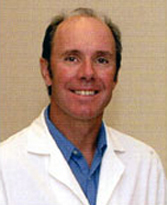Dr. Peter W. Kalivas
Peter W. Kalivas, Ph.D. is Professor and Chair of Neurosciences, The Neuroscience Institute, Medical University of South Carolina. He joined NARSAD’s Scientific Council in 2003. NARSAD is the world’s leading charity dedicated to mental health research.
Peter’s research interests are: Neurobiology of drug addiction including neuroadaptions in molecular, neuronal and behavioral systems. Neural circuitry mediating the translation of motivation into adaptive behaviors.
Peter is studying how the brain adapts to repeated exposure by drugs of abuse, with a focus on psychostimulants such as cocaine and amphetamine. These adaptations manifest themselves as classic symptoms of addiction, including drug craving and paranoia.
He studies these adaptations first by defining the normal state of the brain circuitry involved using neurochemical, anatomical, and behavioral techniques. This has led to the characterization of a circuit, termed the motive circuit, that is intimately involved in translating motivational stimuli into normal adaptive behavioral responses. He then superimposes on this circuit repeated exposure to psychostimulants and examines changes in the function of the motive circuit using molecular, neurochemical, and behavioral techniques.
This strategy has uncovered many novel neuroadaptions. Notably, the recruitment of glutamate transmission from the cortex in addiction behavior and alterations of gene expression, including novel genes such as NAC-1. The role of changes in gene expression in addiction is validated by microinjecting either antisense oligonucleotide or viral vectors into selected brain nuclei to under or over express, respectively, the gene of interest. Animals with altered expression are then examined in various behavioral models of addiction such as drug self-administration and reinstatement, and locomotor sensitization.
Peter coedited The Basal Forebrain: Anatomy to Function, The Neurobiology of Drug and Alcohol Addiction (Annals of the New York Academy of Sciences), Limbic Motor Circuits and Neuropsychiatry, and The Mesocorticolimbic Dopamine System, and coauthored Dopamine transmission in the initiation and expression of drug- and stress-induced sensitization of motor activity, A circuitry model of the expression of behavioral sensitization to amphetamine-like psychostimulants – I. Forebrain GABAergic innervation, and Alterations in dopaminergic and glutamatergic transmission in the induction and expression of behavioral sensitization: a critical review of preclinical studies.
He earned his BS in Biology from Western Washington University in 1974 and his PhD in Pharmacology from the University of Washington, Seattle in 1980. He holds patent Combination of a glycine transporter (GLYT1) inhibitor and an antipsychotic for the treatment of symptoms of schizophrenia as well as its preparation and use thereof.
